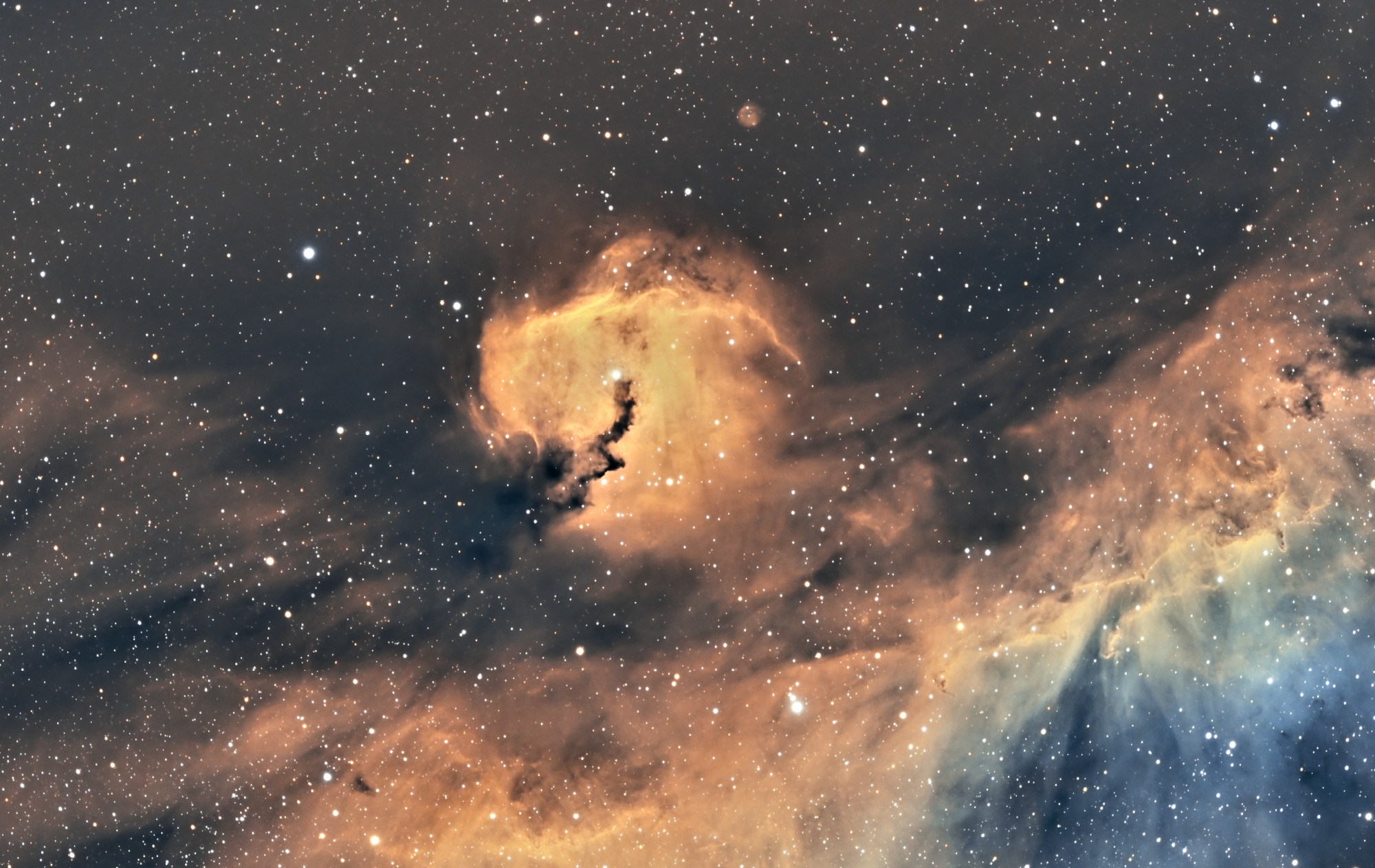The Starfish Star Cluster
Object: Messier 38 The Starfish Star Cluster
Description: Messier 38 (M38), also known as the Starfish Cluster, is an open star cluster located in the northern constellation Auriga. The cluster lies at a distance of 4,200 light years from Earth. With an apparent magnitude of 7.4, it is invisible to the naked eye. M38 has the designation NGC 1912 in the New General Catalogue. The best way to observe Messier 38 is in small or medium-sized telescopes at low magnifications and the best time of year to observe the cluster is during the winter months, when Auriga rises high for northern observers. Messier 38 occupies an area of 21 arc minutes in apparent size and has a linear radius of 25 light years. The estimated age of the cluster is 220 million years. The brightest star in M38 is a yellow giant with the stellar classification G0 and a visual magnitude of 7.9. With an absolute magnitude of -1.5, the star is 900 times more luminous than the Sun. Messier 38 is classified as Trumpler type II,2,r, which means that it is a detached cluster with little central concentration (II), that its stars have a moderate range in brightness (2), and that the cluster is richly populated, with more than 100 confirmed members. Messier 38 was first discovered by the Italian astronomer Giovanni Battista Hodierna before 1654, at the same time that he discovered the nearby clusters Messier 36 and Messier 37. Guillaume Le Gentil found the clusters M36 and M38 independently in 1749.
TECH SPECS
Rights Statement: Copyright, Julio Encarnacion, 2022
Acquisition Dates: March 20, 2022
Published Date: March 21, 2022
Location: Driveway, Land o Lakes, Florida.
Optics:Sky-Watcher Evostar 120ED APO – 120mm Refractor Telescope
Mount: Sky-Watcher EQ6-R Pro
Camera: ZWO ASI2600MM Pro (mono)
Filters: LRGB Chroma 36mm
Guiding: William Optics 50mm Uniguide and ZWO ASI290MM Mini (mono)
Gain: 120
Cooling: -14c
Integration: L (58X10”); R (60X10”); G (60X10”); B (56X10”)
Software: Mount Control: EQMOD; Acquisition, Guiding, Polar Alignment: ZWO ASIAIR Plus; Processing: Pixinisght 1.8.9 and Adobe Photoshop









